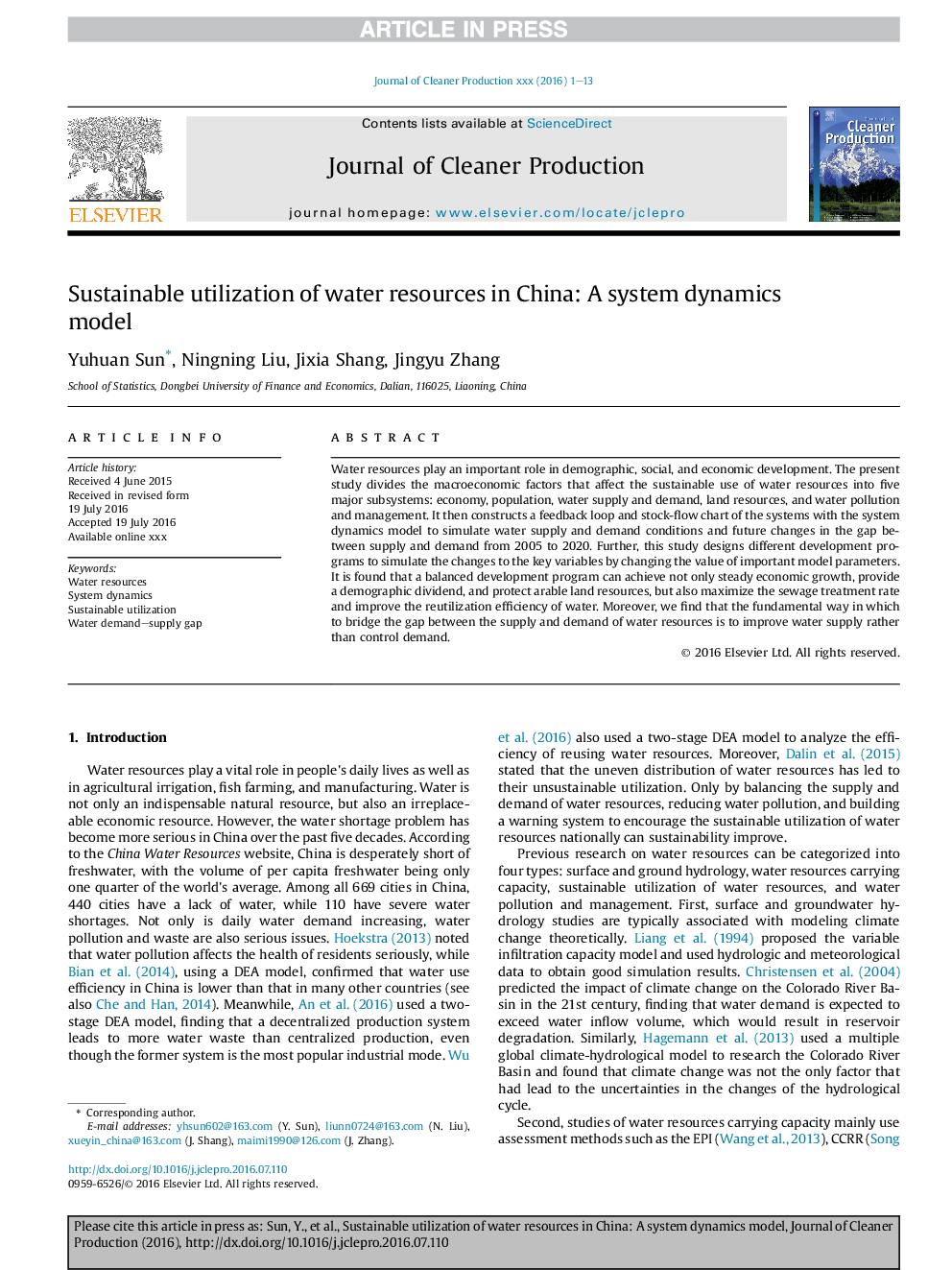| Article ID | Journal | Published Year | Pages | File Type |
|---|---|---|---|---|
| 5481223 | Journal of Cleaner Production | 2017 | 13 Pages |
Abstract
Water resources play an important role in demographic, social, and economic development. The present study divides the macroeconomic factors that affect the sustainable use of water resources into five major subsystems: economy, population, water supply and demand, land resources, and water pollution and management. It then constructs a feedback loop and stock-flow chart of the systems with the system dynamics model to simulate water supply and demand conditions and future changes in the gap between supply and demand from 2005 to 2020. Further, this study designs different development programs to simulate the changes to the key variables by changing the value of important model parameters. It is found that a balanced development program can achieve not only steady economic growth, provide a demographic dividend, and protect arable land resources, but also maximize the sewage treatment rate and improve the reutilization efficiency of water. Moreover, we find that the fundamental way in which to bridge the gap between the supply and demand of water resources is to improve water supply rather than control demand.
Related Topics
Physical Sciences and Engineering
Energy
Renewable Energy, Sustainability and the Environment
Authors
Yuhuan Sun, Ningning Liu, Jixia Shang, Jingyu Zhang,
